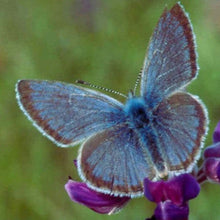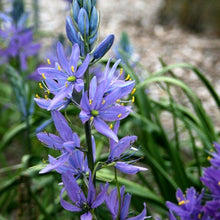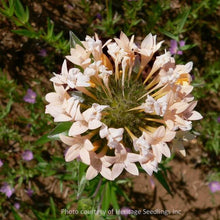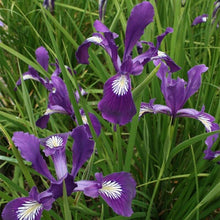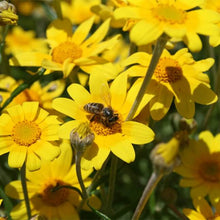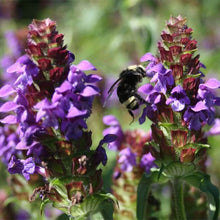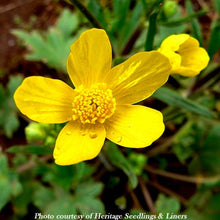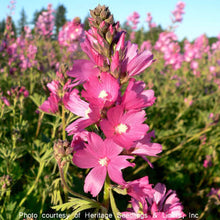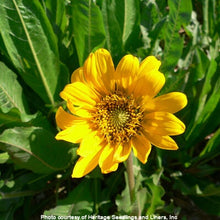
A composition of wildflowers designed to entice and delight a whole host of nectar seeking pollinators – but more specifically, butterflies. These flowers possess succulent nectaries easily accessed by the butterfly’s long, coiling, tube-like “tongue” (actually called a proboscis). While the mix is weighted towards nectar species, there are a few host species, too. So, rejoice if you see some of your foliage getting nibbled by caterpillars. Without them, we have no butterflies!! To ensure this mix is well suited for both meadows and urban yardscapes alike, we’ve used only shorter flowering species – the flowering height of this mix is 3 feet and lower.
Packet covers approx 15 sq ft.
Species included:
Allium amplectens - Narrow-leaved onion
Camassia quamash - Common camas
Collomia grandiflora - Grand collomia
Eriophyllum lanatum - Oregon sunshine
Iris tenax - Oregon iris
Lomatium nudicaule - Barestem biscuitroot
Lomatium utriculatum - Spring gold biscuitroot
Lotus purshianus - American bird’s foot trefoil
Lupinus polycarpus (L. micranthus) - Smallflower lupine
Phacelia nemoralis - Oregon phacelia
Plagiobothrys figuratus - Fragrant popcorn flower
Plagiobothrys nothofulvus - Rusty popcorn flower
Plectritis congesta - Sea Blush
Potentilla glandulosa - Sticky cinquefoil
Prunella vulgaris v. lanceolata - Lanceleaf selfheal
Ranunculus occidentalis - Western buttercup
Rupertia physodes - Scurf pea
SIdalcea malviflora (virgata) - Rose checkermallow
Viola praemorsa - Canary violet
Wyethia angustifolia - Narrowleaf mule ears
Wildflower meadow establishment
Site location and Preparation:
Wildflower meadows need an open sunny area with at least 6 hours of full sun per day to thrive. Reduce weeds on the soil surface prior to sowing – good site prep is crucial for success. Try not to skimp on this part of the process. Your site should be as free of existing vegetation as possible. Sod removal, seedbank removal, solarization, sheet mulching, digging, and any combination thereof are all options. Tilling, however, is not recommended as it will bring a whole host of weed seeds to the surface where they will germinate – they are best left buried!
Timing:
In the Willamette Valley, September through November is the best time for planting wildlflower seed mixes. They can still be planted into late winter, but this is not optimal. Most of these species need some exposure to cool temperatures and damp conditions before germination can occur – and the period of exposure varies from species to species. If planted too late in the fall/winter season, some species may not receive their required stratification period and, therefore, may not germinate.
Seeding Tips:
Seed/Sq Ft: A common target seeding rate for the Willamette Valley is 30 – 60 seeds/sq. ft. With the lower end being on a very clean site and the upper end being a site with some existing vegetation.
One option is to mix the seed with a cutting agent for the best distribution. Inert materials such as vermiculite, coarse-textured sand, rice hulls, and sawdust are all viable options. Mix seed with equal or greater amount of cutting agent. To help achieve a more uniform distribution you can cut the mixture in half. Apply half walking in one direction and the other half walking in a perpendicular direction.
It is OK to cover seed with a light dusting of soil (sift potting soil through a sieve to dust the seeded area with fine soil). Cover only until you can barely see the cutting agent – no more. Some seed species need light to germinate. However, this very thin layer may help hasten germination and help minimize seed predation.
Post-seeding care:
Watering: If there is no rain in the immediate forecast, water in the newly sown seeds. Also, if there is no rainfall within a few days, water only lightly as needed until you see some seeds sprouting.
Fertilizing: It is not necessary to fertilize your wildflower meadow under normal conditions. Native plants do not require fertilizer, and the application of fertilizer with high nitrogen content will tend to encourage weed growth.
For information regarding Meadowscaping, check out this link and their awesome handbook:
Photo Credit butterfly: Fender's blue butterfly on lupine by USFWS Headquarters
Photo Credit flowers: Willamette Wildlings










